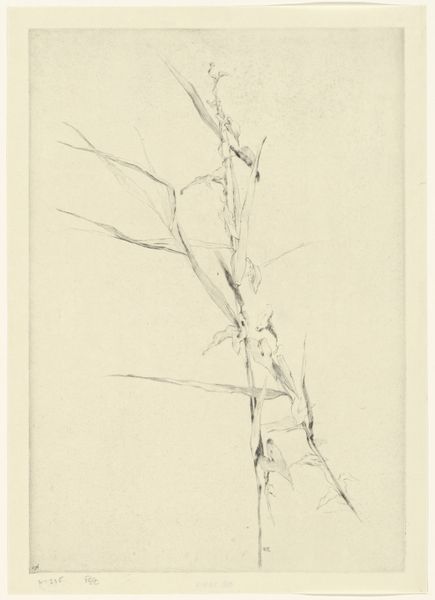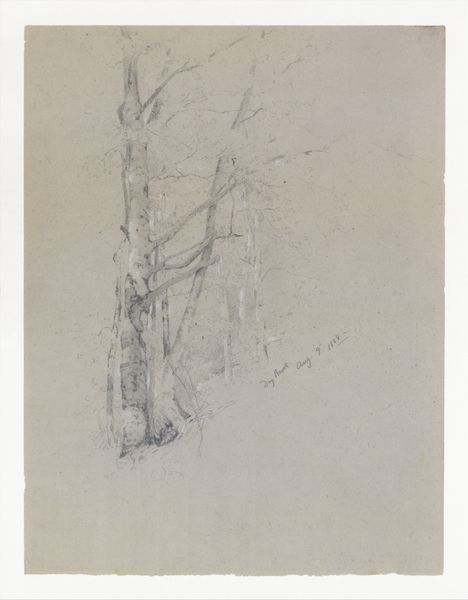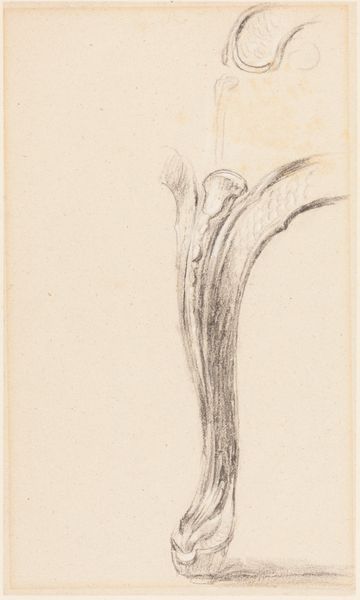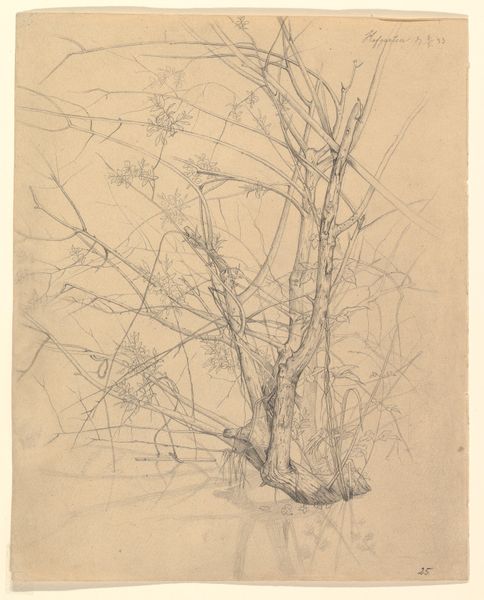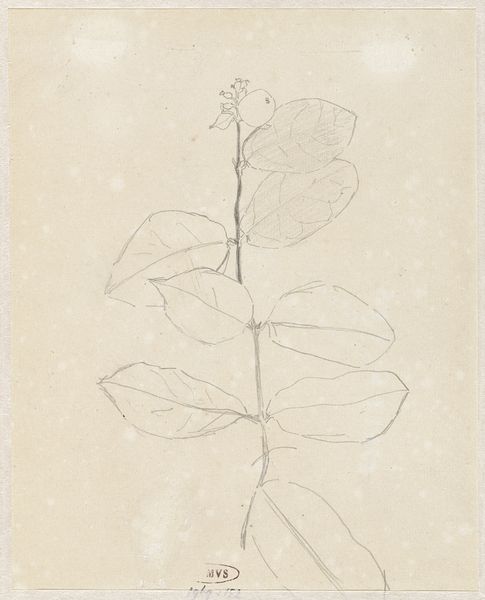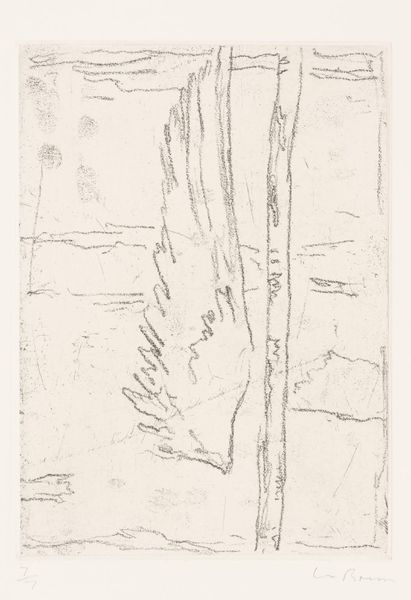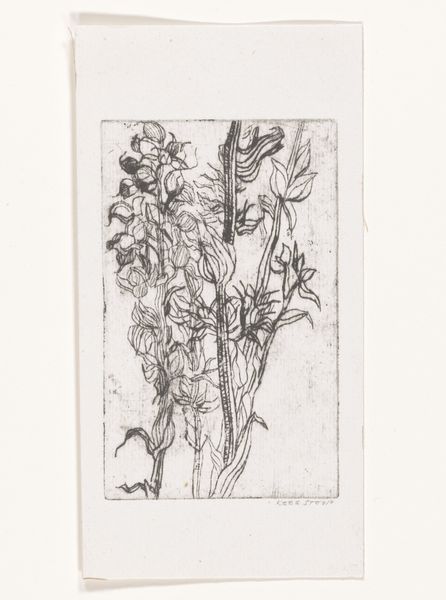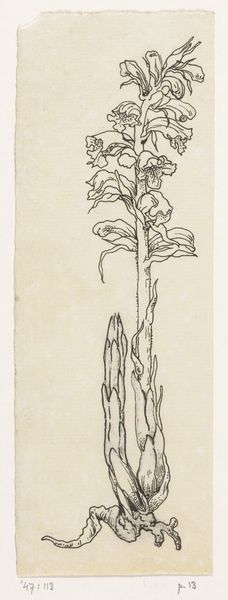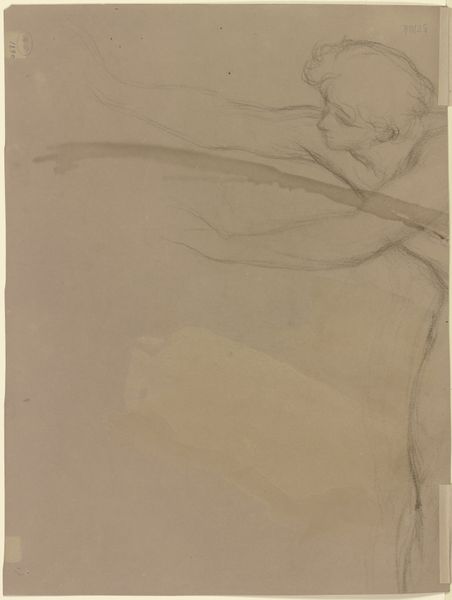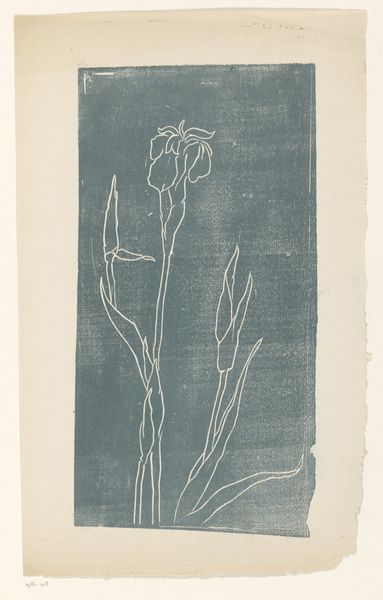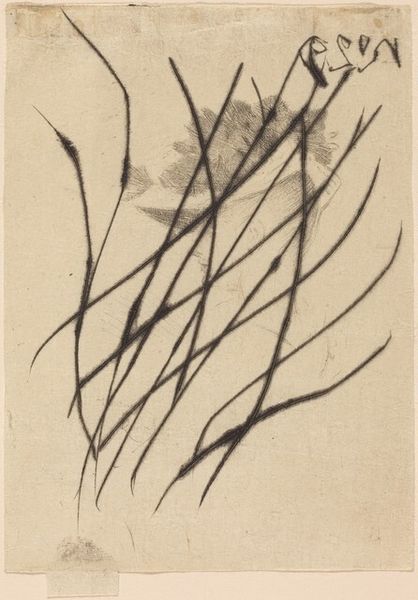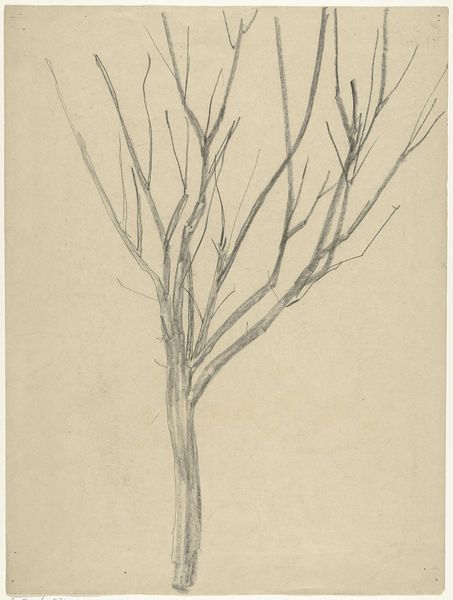
drawing, pencil
#
drawing
#
landscape
#
pencil
#
northern-renaissance
#
realism
Dimensions: height 202 mm, width 105 mm
Copyright: Rijks Museum: Open Domain
Curator: Looking at this pencil drawing, what strikes you most, Editor? Editor: Its starkness, actually. There’s an almost brutal simplicity to the lone tree, the sharp angles of its branches against what seems like an endless backdrop. Curator: Indeed. This piece is “Kale boom” by Jan Mankes, thought to have been made sometime between 1899 and 1920. Mankes was a Dutch artist known for his quiet realism. Considering that period, how do you think the materials and method contribute to our reading of this work? Editor: Pencil, a readily available and relatively inexpensive material, speaks to the democratic possibilities of artmaking. The work feels immediate. There's an intimacy inherent to drawing, almost as if Mankes directly transferred his vision to paper. This intimacy resists established modes of art making, inviting wider audiences to the artistic process itself. Curator: It’s interesting how you see that as resistant. I read something more melancholic in this stark depiction, perhaps reflective of the social anxieties of the turn of the century. The singular tree, stripped bare, evokes ideas of isolation and even precarity experienced during rapid industrialisation. How would it have been viewed through contemporary lenses relating to, say, social alienation and labour? Editor: Precisely. By focusing on a seemingly mundane subject with accessible tools, Mankes inadvertently captured the shift away from idealized landscapes to everyday reality, connecting to both physical work of drawing with broader discussions about the social realities shaping society at the time. Curator: It certainly challenges notions of art's exclusivity, especially by drawing our attention to the labour that underpins artmaking. Editor: A vital aspect often sidelined in discussions surrounding early 20th-century art. Curator: By revealing this underlying materiality, and these social factors, it allows us to connect with broader themes in very grounded ways. Editor: Absolutely. For me, Mankes’ choice emphasizes accessibility—making the artistic process more available while pointing to our material relation to an object, encouraging dialogue, not just awe. Curator: A quiet yet thought-provoking piece—I think it successfully encourages a reflection on societal transition through natural imagery and subtle, almost private expression.
Comments
No comments
Be the first to comment and join the conversation on the ultimate creative platform.
